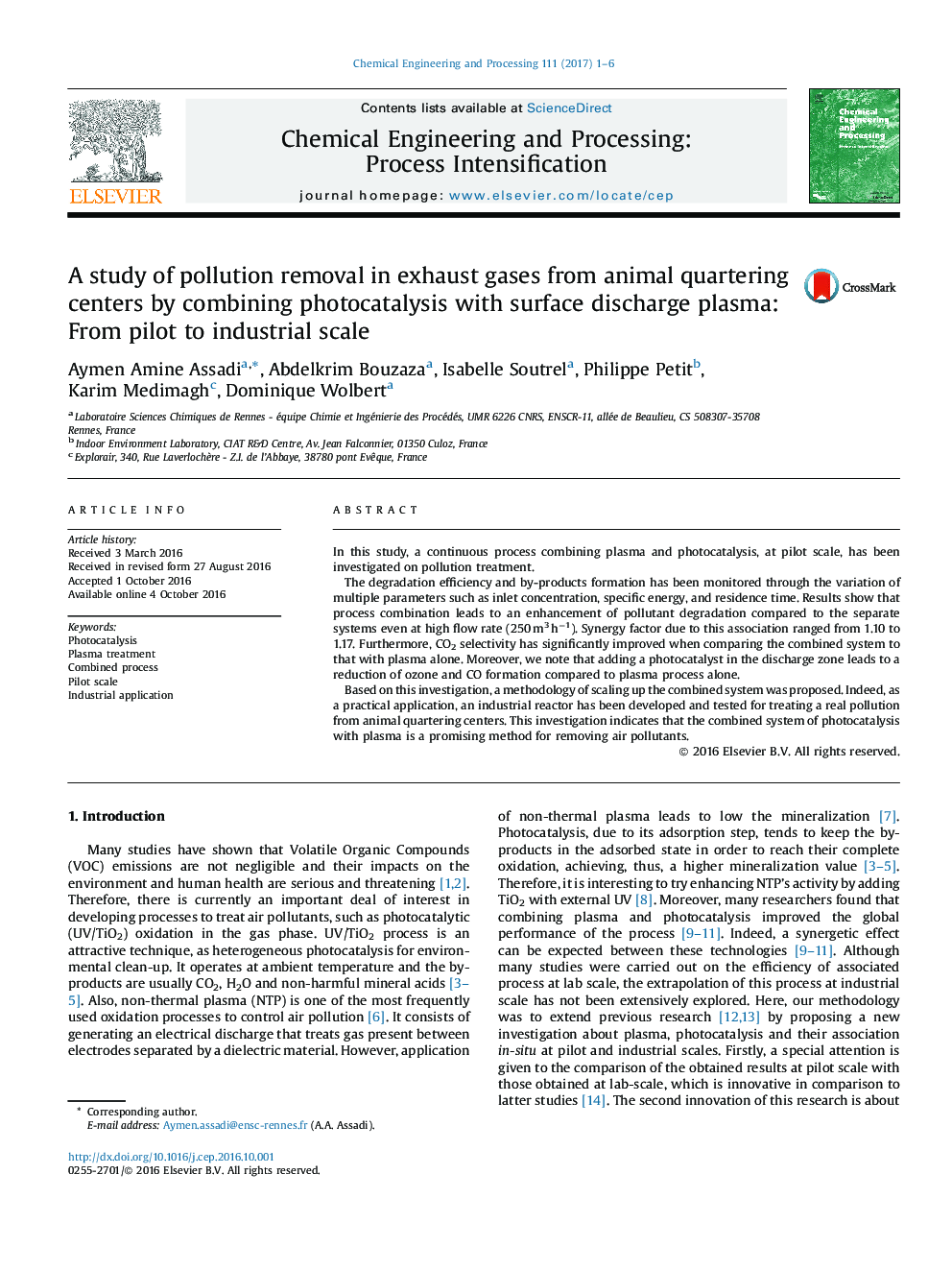| Article ID | Journal | Published Year | Pages | File Type |
|---|---|---|---|---|
| 4998240 | Chemical Engineering and Processing: Process Intensification | 2017 | 6 Pages |
â¢Isovaleraldehyde removal by plasma and photocatalysis is studied at pilot scale.â¢A synergetic effect is confirmed at high value of flowrate.â¢A real pollution from animal quartering centers has been treated.â¢The associated system seems to be a potential method in removing air pollutants.
In this study, a continuous process combining plasma and photocatalysis, at pilot scale, has been investigated on pollution treatment.The degradation efficiency and by-products formation has been monitored through the variation of multiple parameters such as inlet concentration, specific energy, and residence time. Results show that process combination leads to an enhancement of pollutant degradation compared to the separate systems even at high flow rate (250Â m3Â hâ1). Synergy factor due to this association ranged from 1.10 to 1.17. Furthermore, CO2 selectivity has significantly improved when comparing the combined system to that with plasma alone. Moreover, we note that adding a photocatalyst in the discharge zone leads to a reduction of ozone and CO formation compared to plasma process alone.Based on this investigation, a methodology of scaling up the combined system was proposed. Indeed, as a practical application, an industrial reactor has been developed and tested for treating a real pollution from animal quartering centers. This investigation indicates that the combined system of photocatalysis with plasma is a promising method for removing air pollutants.
Graphical abstractDownload high-res image (262KB)Download full-size imagePhotograph of prototype combining plasma and photocatalysis in situ.
